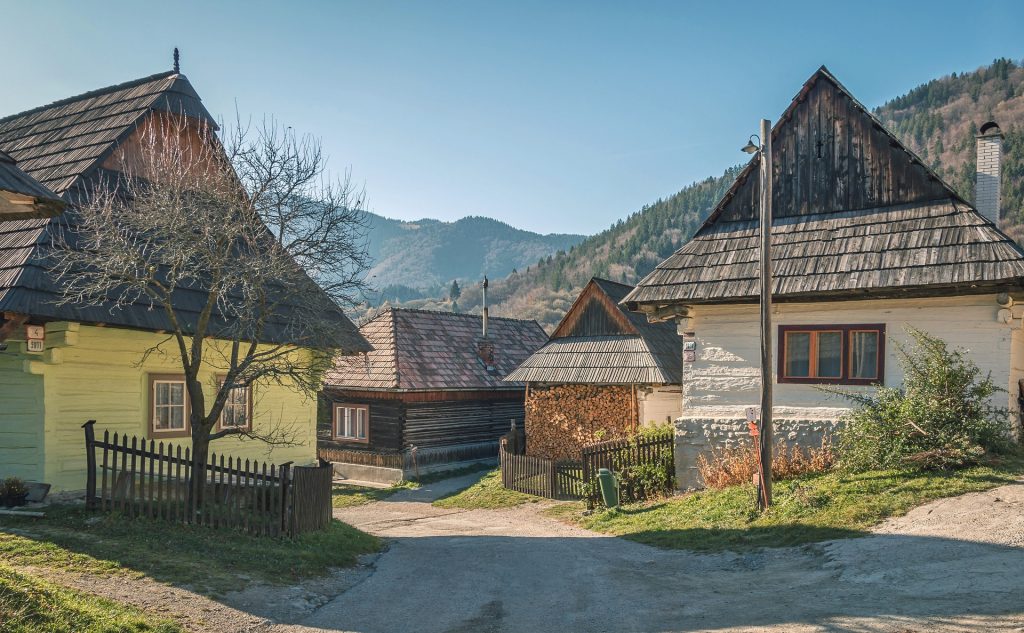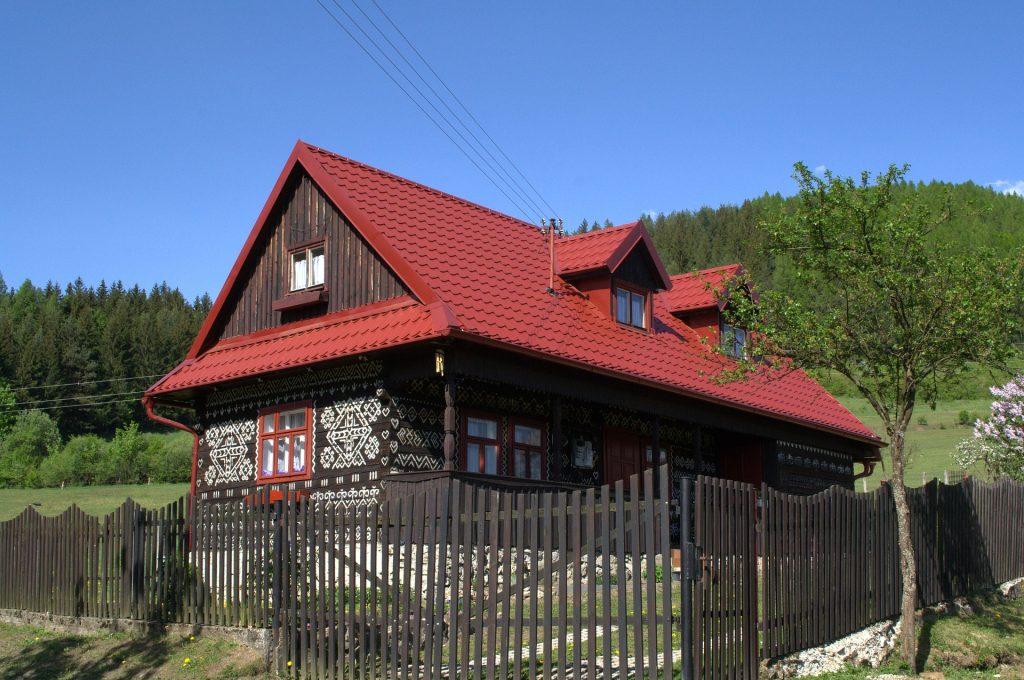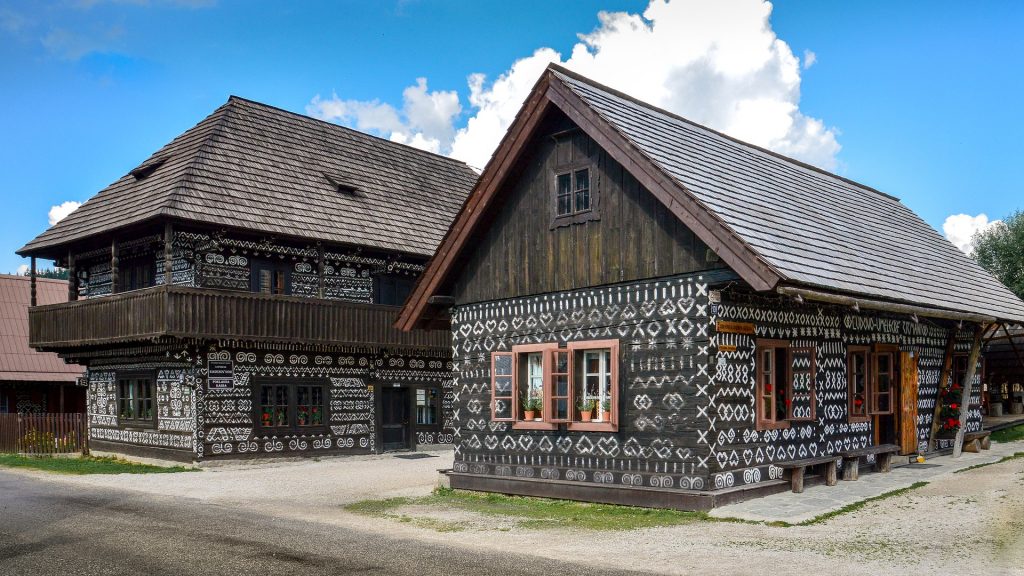Čičmany and Vlkolínec
Monument reservations – Čičmany and Vlkolínec
Cicmany and Vlkolinec became conservation reserves 40 years ago. In both villages, the type of settlement and original wooden buildings are protected. The distance between Vlkolinec and Cicmany is about 120 kilometers.
Vlkolínec
The most famous open-air museum in Slovakia is probably Vlkolínec. In the village with forty wooden houses from the 16th to 19th century live today twenty permanent residents. Vlkolínec was included in the UNESCO World Heritage List in 1993. Based on the comparative study ICOMOS was evaluated as the best preserved seat of this type in the Carpathian Arc.

73 objects are listed in the conservation fund, most of which are wooden houses or farmyards.
The starting point to this Slovak settlement Vlkolínec is part of Ružomberok – Biely Potok. Originally it was a settlement of lumberjacks, shepherds and farmers. One legend says that the name of this village was derived from wolves in this locality.
Rare buildings of the village Vlkolinec are two-storey log bell tower from 1770 and Baroque-Classicist stone rím.kat. Church of the Visitation of the Virgin Mary from 1875. In close proximity to the church is a municipal cemetery with preserved stone and metal tomb crosses. In the village there is also a museum – Peasant House with an exposition of original housing, use of objects in the home, in agriculture. An interesting building is also the building of the former school, which houses an exhibition of works of art and hunting trophies.
Outside the urban area of Vlkolinec there are farm buildings – haylofts (stalls), they are single-room log buildings with saddle roofs, scattered on terraced fields and surrounding meadows.
Vlkolinec Civic Association was founded in the village of Vlkolinec, which organizes attractive events for the general public and visitors to this site.

Habits in Vlkolínec
Carnival in Vlkolinec Fascans are a synthesis of old Slavonic ritual ceremonies of early spring and carnival cultures.
Spring customs in Vlkolinec
In the oldest European cultures, the beginning of a new annual cycle was associated with the arrival of spring.
Spring in Vlkolinec
At the end of February, the grassy southern banks began to appear. On traditional Sunday afternoon, the girls choked Morena from straw.
Cleaning wells
In the old notions of the world, well and spring were perceived as a journey into the underworld, to the waters of the depths, where mysterious forces are hidden.
May, a period of love and the birth of a new life
The greenery of May was a symbol of strength and good growth. The most important position among plants was the tree in the customs of this period.
Ball in Vlkolinec
In Vlkolínec was the May Day on the first Sunday in May. On Saturday afternoon the young men gathered and went out to the village beyond Sidor.
May planting in Vlkolinec at present
The event began one day before May 1, walking around the village with music, from house to house: “whoever wants to build May must pay the trumpet”, all according to tradition…
Summer, mowing and drying hay in Liptov
After the summer solstice, agricultural work on meadows, mowing and hay drying began in Liptov.
“When the hills and valleys come to life” – hay breaking in Vlkolinec
Once the Vlkolibec meadows were alive, early in the spring, the meadows were cleaned in March, when the branches of trees and bushes were harvested.
Čičmany
A similar open-air museum in Slovakia is the village of Čičmany, which is sought after for its unique white ornamental decoration on wooden buildings. The white lines of geometric ornaments appear to have originated in magical rites and were supposed to protect the dwelling from impure forces.

This natural museum is located in the valley of the Strážovské Hills in the highest village in the Žilina district, in the village of Čičmany, near the source of the Rajčianky River.
The village burnt down several times, the last devastating fire in which almost half of the village burnt down, burned up in 1921. In order to get the original character of Čičmany as soon as possible after the fire, competitions in the decoration of houses were organized.
The complex of folk architecture, remarkable for its well-preserved and stylish unity, was declared a conservation area in 1979.
Permanent exposures:
- Raden’s House: From the Life and Work of the Chichian People, From Family Habits
- House no. 42: Folk dwelling